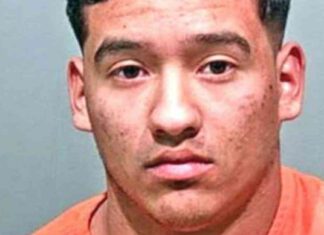(Nairobi) A few hundred people gathered in Nairobi for a new anti-government demonstration, sparse and punctuated by some clashes, the day after the withdrawal of the draft budget which had brought Kenyan youth onto the streets and turned into a bloodbath on Tuesday.
On Wednesday, President William Ruto gave in to the demands of the young protesters and withdrew the unpopular budget bill that included numerous taxes, first on bread and then on fuel.
In the capital Nairobi, the business center did not experience the mobilization of previous days and the significant deployment of the police and the army visibly dissuaded many young people from protesting.
Some scuffles occurred between small groups, throwing stones or attempting to attack businesses, and the police responded with tear gas and rubber bullets, journalists noted. of the AFP.
” I’m disappointed. I am coming back home. It’s not our demonstration, it’s not Generation Z [young people born after 1997, Editor’s note]. Generation Z, we are peaceful, we come with phones and flags. Today, it wasn’t about Generation Z, they were just thugs,” lamented Daniel, a 23-year-old computer science student, who did not want to give his last name.
The roads leading to many official buildings, the presidential palace, the Parliament, were blocked as a precaution two days after the assault on the parliament by demonstrators.
Demonstrations also took place in opposition strongholds of Mombasa (east) and Kisumu (west), bringing together several hundred people.
The police, according to several NGOs, fired live ammunition to contain the demonstrators who forced the security barriers to enter the National Assembly and Senate complex, an attack unprecedented in the history of independent Kenya since 1963.
After two deaths on June 20 in Nairobi, the toll from Tuesday’s protests was 22 people killed, including 19 in Nairobi, and more than 300 injured, said the Kenyan human rights body (KNHRC).
According to AFP journalists, most of the demonstrators present on Thursday were men.
“It looks scary outside,” said Margaret, 26, of why she did not go out to protest after participating in the previous three days of action. She preferred to withhold her last name and clarified: “The soldiers came out in large numbers.”
Beyond the draft budget, the protest movement has transformed into a broader denunciation of the policies of William Ruto, elected in 2022 with the promise of promoting redistribution to the working classes.
On Wednesday, a figure in the protest movement, journalist and activist Hanifa Adan, called for demonstrations again on Thursday during a “peaceful” white march in memory of the victims.
A few hours later, William Ruto, who the day before had stated that he wanted to firmly repress “violence and anarchy”, finally announced the withdrawal of the budget project, and said he wanted a national consultation with young people.
An announcement immediately described as a “com operation” by Hanifa Adan, and greeted with suspicion by a number of demonstrators, like Lucky, 27, who says he does not “trust Ruto”.
The spokesperson for UN Secretary General Antonio Guterres called on Wednesday for responsibilities to be “clearly” established after the deaths of demonstrators.
The government justifies the new taxes by the weight of the debt: “How can we manage our debt situation together? asked William Ruto after capitulating on the draft budget. According to him, there is a lack of money in particular to finance programs for farmers and teachers.
Kenya’s public debt stands at about 10 trillion shillings (C$104 billion), or about 70% of GDP. The 2024-25 budget included a record 4 trillion shillings (C$43 billion) in spending.





